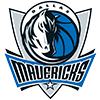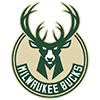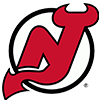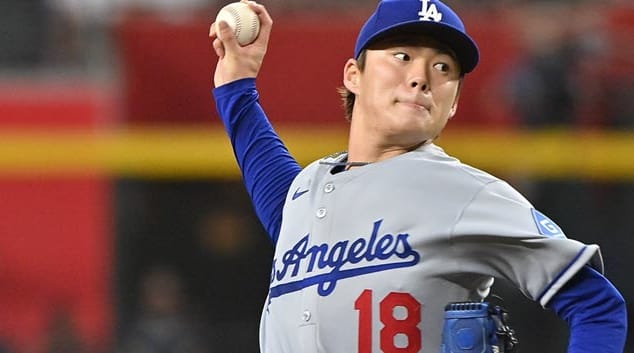The rules are the same as previous editions: grades reflect first-half performance, relative to cost on draft day. The commentary is focused on what to expect in the second half of the season.
Let's start at the top, which alphabetical order allows us to do.
(Stats through July 4.)
Chicago Cubs
| GS | IP | W | ERA | WHIP | K |
| 17 | 108.1 | 12 | 2.33 | 1.06 | 115 |
Arrieta's gone from Baltimore castoff to breakout stud and is now one of the best arms in the majors. He's proven to be just as difficult to hit against this season as he was last year, leading the majors for the second consecutive season with a 0.4 HR/9. This campaign looks a whole lot like 2015, except for one thing: the walks. His rate of free passes this year (9.6 percent) is nearly double what it was last season (5.5 percent), and he has given away four or more walks in six of his 17 starts. Arrieta has also proved vincible in his last two turns, with a combined nine runs allowed in 10.1 innings against the modest
The rules are the same as previous editions: grades reflect first-half performance, relative to cost on draft day. The commentary is focused on what to expect in the second half of the season.
Let's start at the top, which alphabetical order allows us to do.
(Stats through July 4.)
Chicago Cubs
| GS | IP | W | ERA | WHIP | K |
| 17 | 108.1 | 12 | 2.33 | 1.06 | 115 |
Arrieta's gone from Baltimore castoff to breakout stud and is now one of the best arms in the majors. He's proven to be just as difficult to hit against this season as he was last year, leading the majors for the second consecutive season with a 0.4 HR/9. This campaign looks a whole lot like 2015, except for one thing: the walks. His rate of free passes this year (9.6 percent) is nearly double what it was last season (5.5 percent), and he has given away four or more walks in six of his 17 starts. Arrieta has also proved vincible in his last two turns, with a combined nine runs allowed in 10.1 innings against the modest offenses of the Mets and Reds. I think that he'll be fine in the second half, but if he doesn't trim the walk rate then we might see crooked numbers on his stat sheet a bit more often. In terms of roto stats, he's still one of the best bets for four-category dominance in the second half.
Grade: A-
| GS | IP | W | ERA | WHIP | K |
| 17 | 107.2 | 9 | 2.67 | 1.05 | 20 |
Lester was cruising along with a career season, entering Sunday's head-to-head matchup with Noah Syndergaard and the Mets with a 2.03 ERA and 0.97 WHIP, allowing more than three runs in one game this season and firing 13 quality starts in his first 15 turns. Just 1.1 innings and eight earned runs later, and Lester's ERA blew up to 2.67 with a similar impact on his WHIP. Perhaps some measure regression was looming, but it's always disturbing when the bad side of regression hits all at once, particularly when it comes against an injury-ravaged lineup like that of the Mets. Expect Lester to resume his status as a top-20 fantasy starter in the second half.
Grade: A
| GS | IP | W | ERA | WHIP | K |
| 16 | 104.2 | 7 | 3.27 | 1.04 | 107 |
Lackey was the prototype No. 3 starter the last several years, chewing up innings while specializing in weak contact, with low K rates but low walk rates to match. Out of nowhere, the 37-year old has upped the strikeouts by 2.0 K/9 and trimmed 1.8 H/9 off his hit rate. Yet somehow, his ERA is actually up a half-run from last season. The easy analysis is to say that the K rate will regress, but I find it interesting that he has kept the strikeouts up throughout the season from month-to-month, potentially upping the strikeout baseline.
Grade: B+
| GS | IP | W | ERA | WHIP | K |
| 16 | 96.2 | 7 | 2.61 | 1.04 | 85 |
The Cubs have sprinkled the pixie dust on their entire starting rotation for the first half of this season, as every pitcher is outperforming expectations. Hendicks is no exception, and though his low hit rate implies regression, it seems that the same could be said for every pitcher on the Cubs staff, thanks to a fielding squad that has had the most efficient defense in the majors by a healthy margin. He'll regress, but not as far as one might think.
Grade: B+
| GS | IP | W | ERA | WHIP | K |
| 16 | 91.1 | 7 | 3.45 | 1.15 | 73 |
Hammel has long been a half-by-half nightmare, and the writing is on the wall for a coming tumble. Compared to last season, his Ks are down, his walks and homers are up, yet his ERA is down by 0.31 runs. He could do the same thing and have wildly different results.
Grade: C
Cincinnati Reds
| GS | IP | W | ERA | WHIP | K |
| 15 | 95.1 | 4 | 4.34 | 1.22 | 78 |
He has flashed usefulness from time to time in the first half, but his value is built on thin ice, and his affinity for walks are going to get him into trouble. His inclusion in this list is due to the lack of quality arms in Cincy, rather than any optimism that he figures it out in the second half. Pass.
Grade: C-
| GS | IP | W | ERA | WHIP | K |
| 5 | 35.2 | 1 | 3.03 | 1.32 | 36 |
Iglesias carried the most intrigue of all Reds pitchers entering the 2016 season. He was also a popular sleeper pick in fantasy drafts, largely due to the 9.8 K/9 rate from last year, but that K rate was built on the back of a few outlier performances (33 strikeouts in a span of three consecutive starts) down the stretch and which was established over a small sample of innings. He pitched well enough for five starts but then went on the shelf with a shoulder impingement, and when he returned, Iglesias was moved to the bullpen. The competition for saves is wide open and he is the best pitcher in that pen, so he could still have decent fantasy value, but if he does ascend to the closer's role (he doesn't have it yet) then he will be closing games for a bad ballclub with a .357 winning percentage.
Grade: D+
| GS | IP | W | ERA | WHIP | K |
| 5 | 30.1 | 2 | 1.78 | 1.29 | 23 |
DeSclafani finally returned from the strained oblique that delayed his season for more than two months, and his first five starts back have been a success, especially in terms of run prevention. Of course, one-third of his runs allowed have been unearned, and his peripherals hardly support a sub-2.00 ERA, so most of the optimism surrounding DeSclafani is just wishcasting. He has use as a spot starter in fantasy leagues, but there's a non-zero chance that he becomes a liability in four categories if used for every start.
Grade: Incomplete
| GS | IP | W | ERA | WHIP | K |
| 4 | 20 | 0 | 9.00 | 1.85 | 22 |
Reed has been the opposite of what was advertised in the minors. To be honest, his minor-league numbers were not especially impressive, with 8.2 K/9, 3.3 BB/9 and a 3.69 ERA. The most impressive aspect of his pitching line in the minors was the 0.5 HR/9, so naturally he's given up eight bombs in his first 20.0 frames in the majors. I would let someone else deal with the headaches, as even a replication of his minor-league numbers would be insufficient.
Grade: Incomplete
Milwaukee Brewers
| GS | IP | W | ERA | WHIP | K |
| 17 | 101 | 5 | 3.56 | 1.36 | 74 |
He is artificially having a good season, with a career-low ERA yet steps down in every other category. The walk and homer rates are career highs while the strikeouts are at a career-low 6.6 K/9. The strikeouts are nearly at untenable levels; in this case, "untenable" means that the pitcher could be paired with Dellin Betances and still not reach a K-per-inning combined.
Grade: C-
| GS | IP | W | ERA | WHIP | K |
| 14 | 79 | 5 | 4.22 | 1.24 | 68 |
Davies emerged from relative obscurity to chew some quality innings for the Brewers this season. He struggled to finish the sixth inning through May, but last month he finished the seventh inning in three of his six starts. He gives up too many homers for the ERA to stay below 4.00, so unless he fixes that particular issue then he is unlikely to make positive dents in any categories.
Grade: C
| GS | IP | W | ERA | WHIP | K |
| 12 | 76.2 | 6 | 2.93 | 1.02 | 27 |
Guerra tore through the upper minors last season with a 3.13 composite ERA and a combined 11.3 K/9 across two levels. He has been a fantasy revelation this season, winning six of his 12 starts and limiting the hits. The latter will be tough to maintain in the second half and thus far the high K rate hasn't translated to the biggest stage; I wouldn't expect much in the second half, but Guerra is worth rostering to see how he handles a handful more starts in the bigs.
Grade: B
| GS | IP | W | ERA | WHIP | K |
| 13 | 66 | 4 | 6.68 | 1.88 | 42 |
Peralta got lit and was demoted. The breakout everyone anticipated for years never came, once again proving that succeeding on the mound is about more than just throwing hard.
Grade: F
Pittsburgh Pirates
| GS | IP | W | ERA | WHIP | K |
| 12 | 68.1 | 5 | 2.77 | 1.32 | 55 |
Cole is the rare high-floor, high-ceiling pitcher who makes for the ideal No. 2 on a fantasy staff, but he has disappointed in three of four roto categories this year, and now he's on the shelf with a scary triceps injury and no definitive timetable for his return. Cole has the potential to be a four-category stud, but his K rate never recovered from his zero-K performance over seven innings against the Rockies, and he's topped out at seven strikeouts in a game this season. The walk rate is better than league average but falls short of the exceptional numbers of a year ago, and the only thing sparing his ERA from further damage is that he's only allowed three homers even though his hit rate has otherwise shot through the roof. His fantasy stock has fallen precipitously since draft day, and the cloudy status of his injury essentially wrecks his trade value leading up to the deadline.
Grade: C-
| GS | IP | W | ERA | WHIP | K |
| 16 | 87.2 | 5 | 5.34 | 1.64 | 85 |
Liriano has always been wild, as a big part of his game is predicated upon throwing sliders in the dirt and hoping batters are coaxed into swinging over the top. Despite this expectation, his walks are simply out of hand this season, leading the majors with 55 free passes with a rate of nearly six walks per nine innings. He's also surrendering a hit-per-frame and has coughed up 14 homers this season (1.4 HR/9), and though the K-per-inning rate seems respectable at first glance, Liriano is facing so many batters per frame that his frequency of strikeouts has actually fallen nearly five percentage points from last season and at 21.0 percent is his lowest since 2011.
Grade: D-
| GS | IP | W | ERA | WHIP | K |
| 12 | 69.2 | 6 | 5.43 | 1.42 | 70 |
Nicasio was thought to be the latest Ray Searage miracle, emerging from relative obscurity to be a difference-maker on fantasy staffs. It hasn't happened.
Grade: D
| GS | IP | W | ERA | WHIP | K |
| 5 | 28 | 2 | 3.86 | 1.25 | 21 |
The fastball can be electric and the delivery is sound, but MLB hitters have had no problem hitting Taillon in his first exposure to the show. He hasn't missed many bats in his five starts but has also kept the walks at a minimum, but the 30 hits allowed -- including six doubles and four homers -- in 28.0 frames perhaps best exemplifies his lack of dominance thus far. The Pirates likely will be careful with his workload down the stretch, especially after he was placed on the disabled list Monday with right shoulder fatigue. The early returns suggest that will have a bigger impact on ERA and WHIP in the second half than strikeouts, assuming that he can get the hit rate under control. Prospect Tyler Glasnow is not far behind, a pitcher with a very different profile who is likely to pile up the true outcomes (walks and strikeouts) upon his arrival.
Grade: Incomplete
St. Louis Cardinals
| GS | IP | W | ERA | WHIP | K |
| 16 | 102.1 | 7 | 2.90 | 1.13 | 80 |
Martinez hit a speedbump in May, hitting a rough patch after feeling under the weather earlier in the month. He has since gotten his bearings, and though the strikeouts have been a bit behind pace, his ratios have been otherwise solid. Martinez is on a seven-game run of quality starts in which he has compiled a 1.46 ERA and 1.05 WHIP, with 38 strikeouts in 49.1 innings, averaging more than seven full frames per start. The pitcher with the slight build and the powerful delivery might generate questions about his durability over the long haul of the season, but Martinez is answering the doubters with this season's performance, after throwing 179.1 frames in 2015.
Grade: B-
| GS | IP | W | ERA | WHIP | K |
| 17 | 103.1 | 7 | 4.70 | 1.36 | 77 |
Wainwright was sinking fantasy battle ships left and right during April, and though he has got his game back on track recently, it's important to not let the name value disguise what he has become: a pitcher with mediocre ratios, a pedestrian strikeout rate but the stamina and supporting cast to generate wins. Wainwright has never been big on strikeouts, but the he's giving up a career-high hit rate as well as his highest frequency of walks since 2009. In his prime, Wainwright was a boon to three categories with enough strikeouts to not be an issue, but the current iteration -- even forgiving the travesty of his first six weeks -- is only an asset in one category (wins), is neutral (or questionable) in the ratios and a liability in strikeouts. Lower the bar of expectations and he's a useful starter in the right context.
Grade: D
| GS | IP | W | ERA | WHIP | K |
| 17 | 98.2 | 5 | 4.38 | 1.41 | 85 |
Wacha has been a big letdown this season. Like Wainwright, Wacha built his fantasy value with low ratios and last year's big win total (17), in addition to the optimism that comes attached to young arms on good teams (Wacha turned 25 on July 1). Again like Wainwright, Wacha has had a troubling first half of the season, with the inflated ratios once again turning a three-category pitcher into one who is struggling to have one category in which he is having a positive impact. The difference is that Wacha's has been a mess for most of the season, with disaster starts popping up throughout his game log. His long-term prognosis is brighter than that of Wainwright, but Wacha is in the same category for the second half of 2016.
Grade: D
| GS | IP | W | ERA | WHIP | K |
| 16 | 96 | 6 | 3.84 | 1.34 | 81 |
There are likely only so many innings left in the tank, given Garcia's injury history and that the southpaw hasn't cleared 130 innings since 2011. His walk rate has skyrocketed and his hit rate hovers near league average, resulting in a subpar WHIP and denting the fantasy value of a pitcher who isn't likely to exceed 7.5 K/9. Pick the opponents wisely when rostering Garcia and be prepared for the next injury to strike at any time.
Grade: C-
| GS | IP | W | ERA | WHIP | K |
| 16 | 98 | 5 | 4.13 | 1.21 | 63 |
The right-handed control artist has found a new realm of strike zone management, giving away just 17 free passes on the year for a walk rate of just 4.1 percent (1.6 BB/9). Leake can be a standout in the WHIP category if the walk rate holds, but his high-contact approach results in few strikeouts and leaves him vulnerable to balls in play.
Grade: C




























